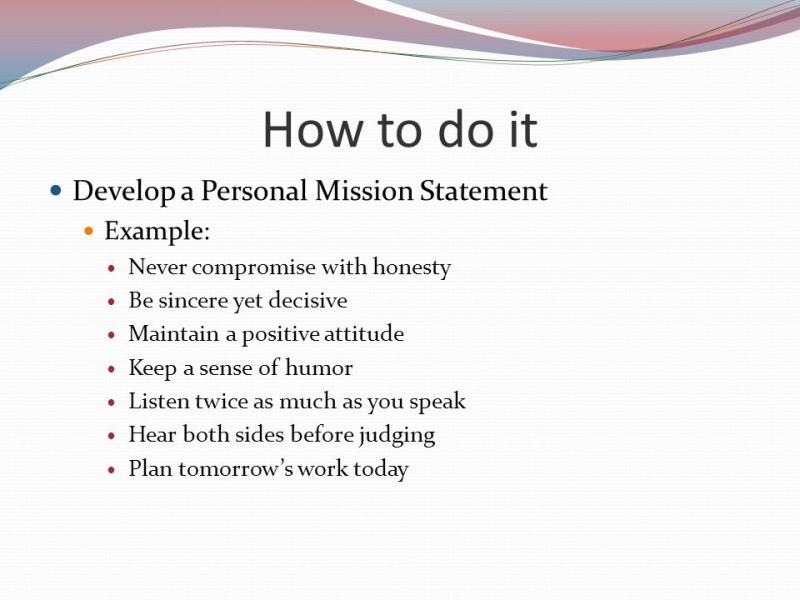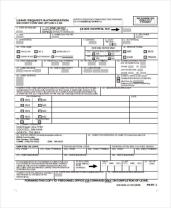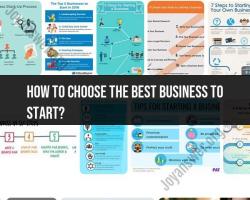How do you develop a mission statement?
Crafting a mission statement involves distilling the core purpose and values of an organization into a concise and impactful statement that guides its actions and decisions. Here's a step-by-step guide to developing a mission statement:
Understand Your Purpose:
- Reflect on why your organization exists. Consider its origins, values, and the problems it aims to solve or the needs it fulfills.
Gather Input:
- Involve stakeholders, including employees, leaders, customers, and partners, to gather diverse perspectives on the organization's purpose and values. Conduct surveys, interviews, or workshops to gather insights.
Analyze Core Values:
- Identify the fundamental values that drive your organization's decisions and actions. These values serve as the foundation for the mission statement.
Define the Unique Offering:
- Determine what makes your organization unique or what sets it apart from others in your industry. Consider the value proposition or the impact you aim to make.
Keep It Concise and Clear:
- Craft a concise statement that captures the essence of your organization's purpose and values. It should be easily understandable and memorable.
Make it Inspirational and Aspirational:
- A powerful mission statement inspires and motivates. It should communicate a sense of purpose and aspiration for the future.
Align with Stakeholders:
- Ensure that the mission statement resonates with stakeholders and aligns with their values and expectations. It should reflect their beliefs and inspire their commitment.
Review and Refine:
- Test the mission statement with key stakeholders for feedback. Revise and refine the statement based on the input received until it accurately reflects the organization's purpose and values.
Communicate and Implement:
- Once finalized, communicate the mission statement widely within the organization. It should be integrated into the culture, reflected in strategies, and used to guide decision-making.
Regularly Evaluate and Update:
- Periodically review the mission statement to ensure it remains relevant and aligns with the organization's evolving goals and values. Update it if needed to reflect changes in the business landscape or societal shifts.
Remember, a well-crafted mission statement serves as a guiding framework, influencing the organization's culture, strategies, and actions. It should inspire and resonate with stakeholders while providing a clear direction for the organization's pursuits.
Navigating purpose: A step-by-step guide on developing a mission statement
A mission statement is a concise and powerful declaration of an organization's purpose, values, and aspirations. It serves as a guiding light, providing direction and inspiration for all stakeholders. Crafting a compelling and effective mission statement requires careful consideration and a collaborative approach.
Step 1: Define Your Core Values
Before embarking on the mission statement journey, it's essential to establish the core values that underpin your organization's identity. These values represent the fundamental principles that guide your actions and decisions.
Step 2: Identify Your Target Audience
Consider who you are trying to reach with your mission statement. Are you addressing your employees, customers, partners, or the broader community? Understanding your target audience will help tailor the language and tone accordingly.
Step 3: Gather Input and Perspectives
Involve key stakeholders from various departments and levels of seniority in the mission statement creation process. Gather their insights, ideas, and concerns to ensure a well-rounded and representative statement.
Step 4: Craft a Clear and Concise Statement
Your mission statement should be concise, easy to understand, and memorable. Aim to articulate your purpose in a few impactful sentences.
Step 5: Seek Feedback and Refine
Share your draft mission statement with a wider audience for feedback. Gather comments from colleagues, stakeholders, and potential customers to identify areas for improvement.
Step 6: Review and Revise
Regularly review and revise your mission statement to ensure it aligns with your organization's evolving goals, values, and operating environment.
Defining your why: Key questions to ask when creating a mission statement
Crafting a meaningful mission statement requires introspection and a deep understanding of your organization's purpose. Here are some key questions to consider:
1. What is the unique value your organization brings to the world?
2. What are the fundamental problems or challenges your organization aims to address?
3. What lasting impact do you want to make on your industry, community, or society?
4. What are the core values that guide your organization's decisions and actions?
5. What is the legacy you want to leave behind?
Collaborative mission crafting: Involving stakeholders in the process
A mission statement should not be a top-down directive but rather a shared vision developed with the input and participation of key stakeholders. Here are some strategies for collaborative mission crafting:
1. Form a Mission Statement Committee: Create a diverse committee representing various departments, levels of seniority, and stakeholder groups.
2. Conduct Brainstorming Sessions: Facilitate open discussions and encourage active participation from all committee members.
3. Gather Written Input: Encourage stakeholders to submit their thoughts, ideas, and suggestions in writing.
4. Synthesize and Refine: Compile all input and work together to craft a cohesive and representative mission statement.
5. Seek Feedback and Iterate: Share the draft mission statement for feedback from a broader audience and make necessary refinements.
The evolving mission: Adapting your statement as goals and values change
A mission statement is not a static document; it should evolve alongside the organization's growth and changing goals and values. Here are some signs that your mission statement may need revision:
1. The statement no longer accurately reflects the organization's current purpose or activities.
2. The statement is no longer inspiring or motivating for employees or stakeholders.
3. The statement is no longer aligned with the organization's core values.
4. The statement is no longer clear, concise, or easy to understand.
5. The statement has become outdated or irrelevant.
Mission statement in action: Real-world examples of successful implementations
Many organizations have effectively crafted and implemented mission statements that have guided their success and inspired their stakeholders. Here are a few notable examples:
1. Google's Mission Statement: "To organize the world's information and make it universally accessible and useful."
2. Nike's Mission Statement: "To bring inspiration and innovation to every athlete in the world."
3. TOMS Shoes' Mission Statement: "To help a child in need with every step."
4. Patagonia's Mission Statement: "We are in business to save our home planet."
5. The Walt Disney Company's Mission Statement: "To entertain, inform, and inspire people around the globe through the power of storytelling."
These mission statements effectively capture the essence of each organization's purpose, values, and aspirations, serving as guiding principles for their actions and decision-making.













